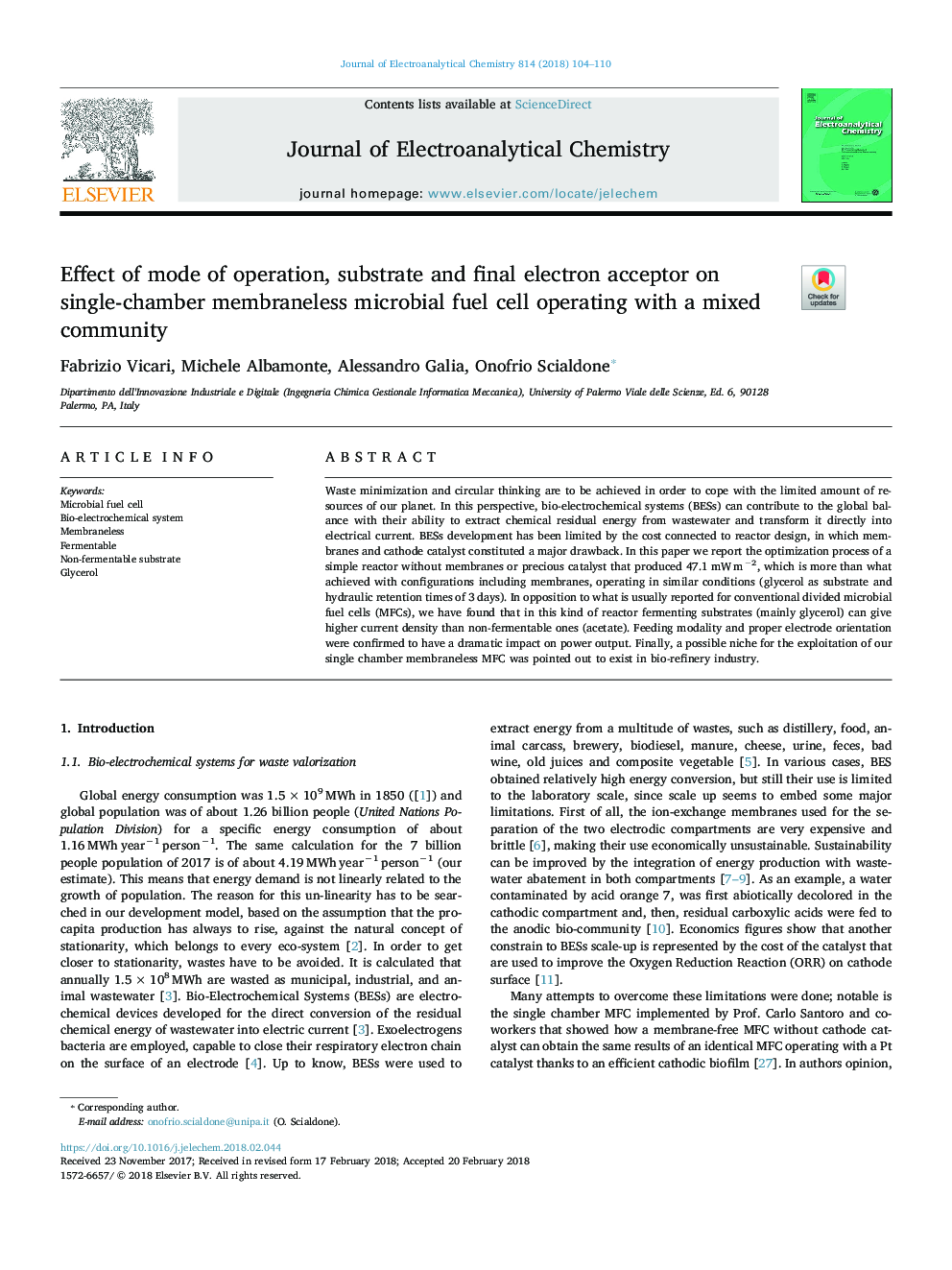| Article ID | Journal | Published Year | Pages | File Type |
|---|---|---|---|---|
| 6661988 | Journal of Electroanalytical Chemistry | 2018 | 7 Pages |
Abstract
Waste minimization and circular thinking are to be achieved in order to cope with the limited amount of resources of our planet. In this perspective, bio-electrochemical systems (BESs) can contribute to the global balance with their ability to extract chemical residual energy from wastewater and transform it directly into electrical current. BESs development has been limited by the cost connected to reactor design, in which membranes and cathode catalyst constituted a major drawback. In this paper we report the optimization process of a simple reactor without membranes or precious catalyst that produced 47.1â¯mWâ¯mâ2, which is more than what achieved with configurations including membranes, operating in similar conditions (glycerol as substrate and hydraulic retention times of 3â¯days). In opposition to what is usually reported for conventional divided microbial fuel cells (MFCs), we have found that in this kind of reactor fermenting substrates (mainly glycerol) can give higher current density than non-fermentable ones (acetate). Feeding modality and proper electrode orientation were confirmed to have a dramatic impact on power output. Finally, a possible niche for the exploitation of our single chamber membraneless MFC was pointed out to exist in bio-refinery industry.
Related Topics
Physical Sciences and Engineering
Chemical Engineering
Chemical Engineering (General)
Authors
Fabrizio Vicari, Michele Albamonte, Alessandro Galia, Onofrio Scialdone,
